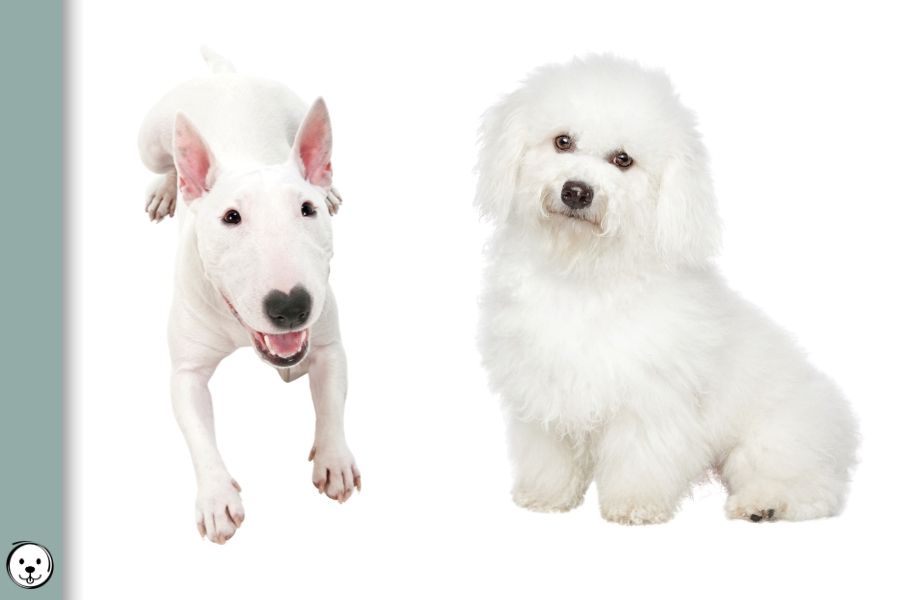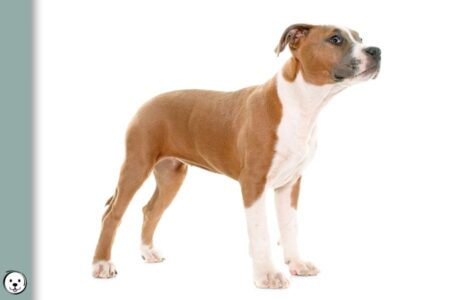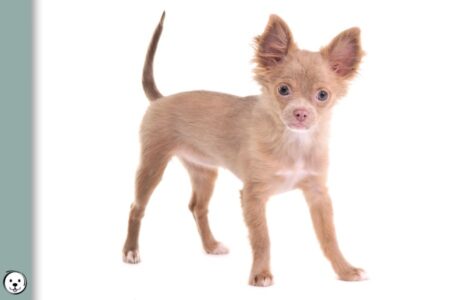There are two mechanisms that can cause a solid white coat in dogs.
So… what’s the difference? Some dogs have a pigmented coat but with a very pale pigment color. Meanwhile, others have white a coat because they don’t produce any pigment at all.
Both, low pigment intensity and white spotting can produce a fully white coat. And these traits can be hard to tell apart even if you don’t know what you are looking for.
The main difference for breeding purposes is that only a true pigment deficiency can lead to blue eyes or a lack of skin and nose pigment, as well as putting the dog at risk of hearing loss.
In this article, we’ll explain both low pigment intensity and white spotting before talking about what makes these coat color patterns different and how you can (sometimes) tell the difference.
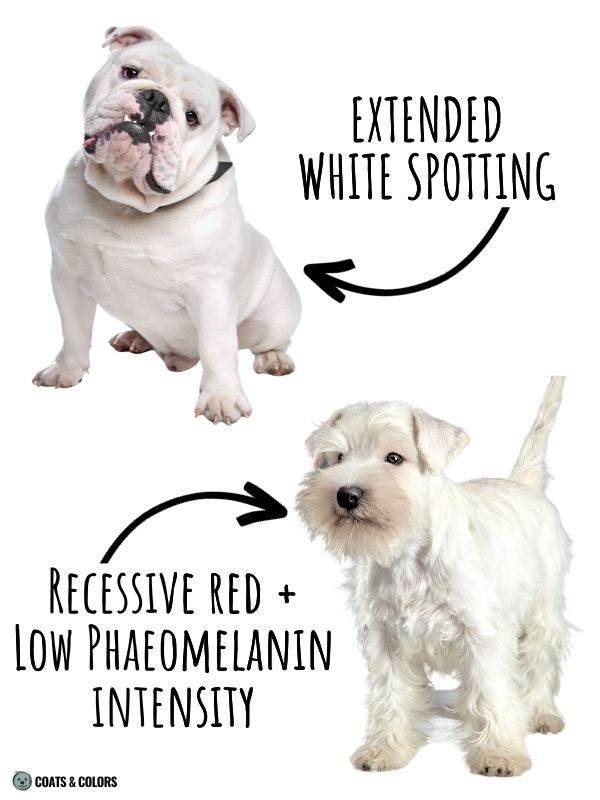
White Pigment
There are many dog breeds that come with a solid white coat or have a solid white variety.
Just think of a white Samoyed, Spitz, Bichon, Westie, Great Pyrenees, Swiss Shepherd, or Poodle.
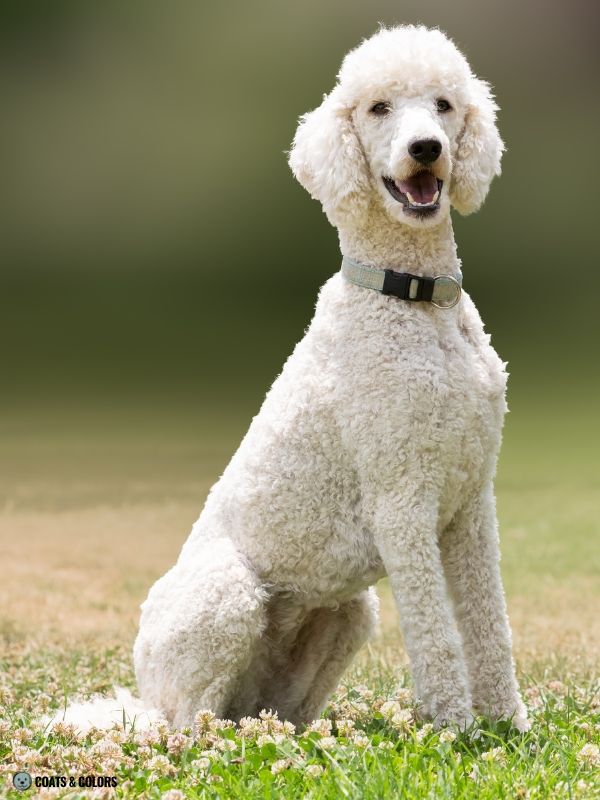
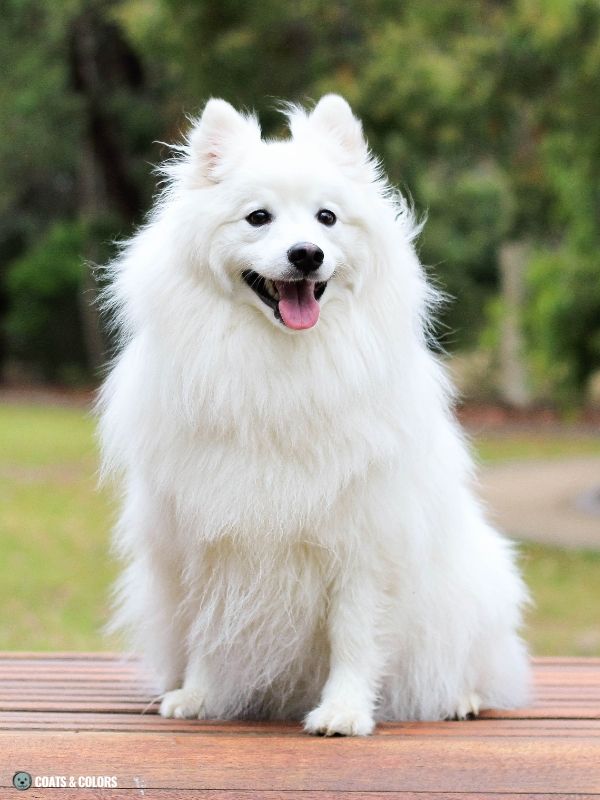
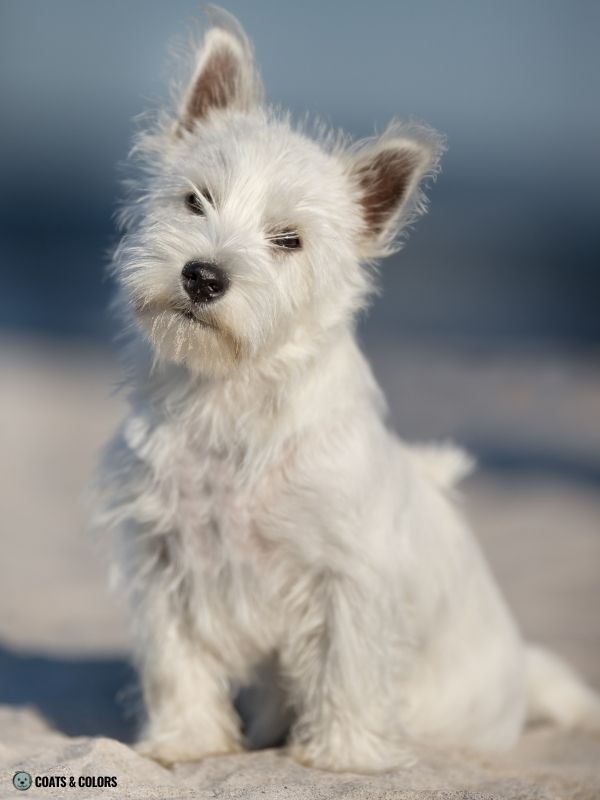
These breeds are recessive red (e/e) with a low phaeomelanin intensity.
This is the same pattern you can see in yellow Labs or apricot Poodles.
All of these dogs can only express phaeomelanin in their coat.
The only difference is that the color intensity of phaeomelanin in these lighter dogs has been bred way down so that their pigment got so pale that it looks white.
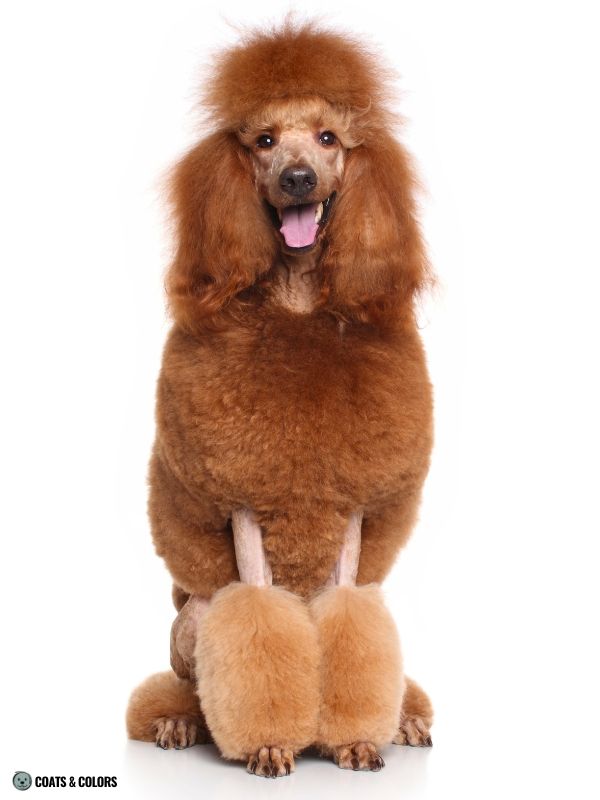
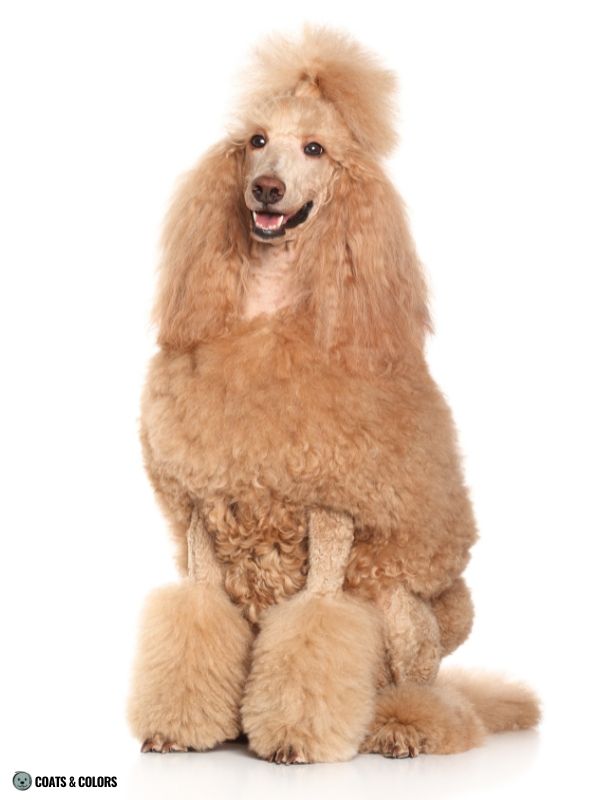
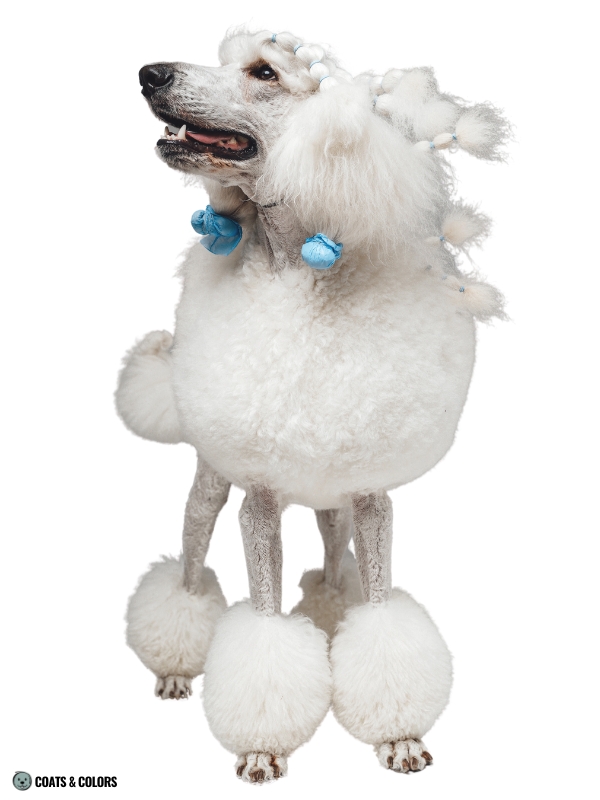
Red intensity is controlled by multiple genes, not all of them well understood.
By default, phaeomelanin is a yellow or red pigment.
But there are modifiers at play that can change an individual dog’s phaeomelanin color on a scale from a rich red or yellow to a pale cream or even white.
The thing is that selective breeding can affect the shade of phaeomelanin.
You might remember the trend to breed Golden Retrievers with a lighter and lighter coat despite the breed standard asking for a “rich lustrous golden color“?
Most breed standards define a preferred range of phaeomelanin colors for each breed.
For example, Irish Setters only come in mahogany or chestnut red, Vizslas are a rusty golden color, yellows Labradors may range from fox-red to light cream and Bichons are typically solid white.
There are a number of breeds that only come with white phaeomelanin, never red or yellow. This includes almost all of the dog breeds that only come in solid white.
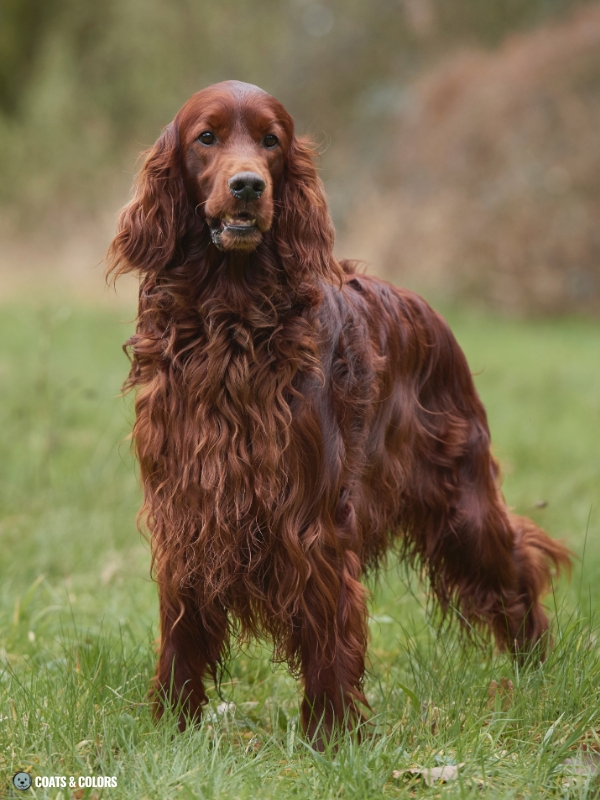


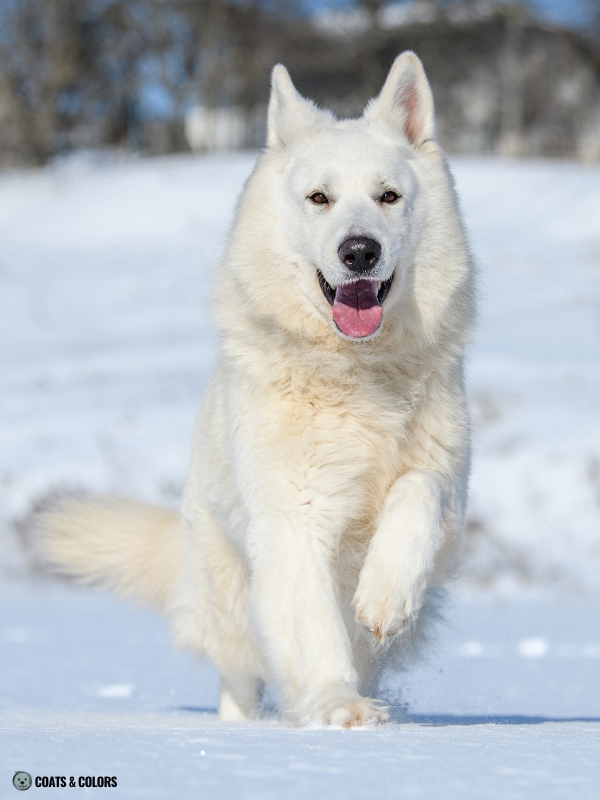
Most patterned dogs have yellow or orange phaeomelanin
Interestingly, very pale phaeomelanin is mostly found in dog breeds that are recessive red (e/e).
There are also some breeds (e.g. Akita Inus or Shibas), where patterned dogs have tan or orange pigment. However, in their recessive red dogs, the same phaeomelanin pigment is white.
So the shade of the phaeomelanin can be linked to the pattern of a dog. Neat, isn’t it?
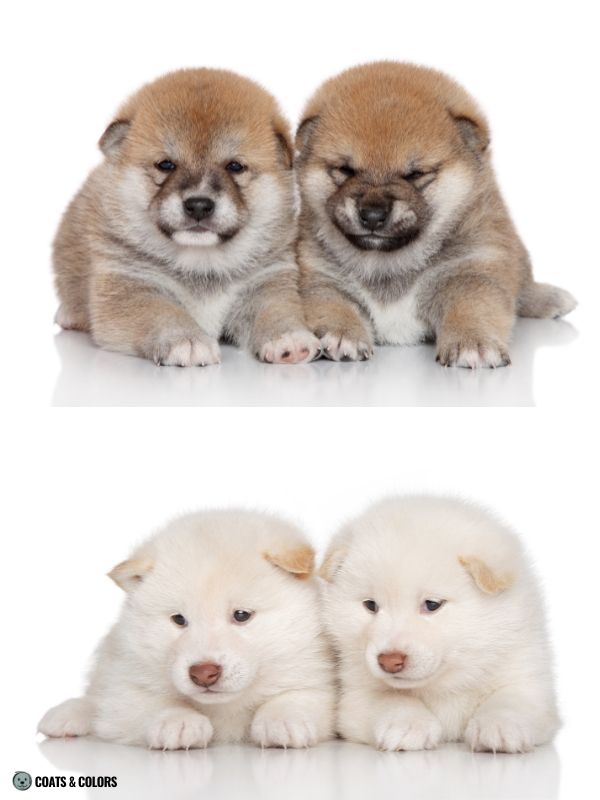
Dogs with white pigment are not at risk for hearing loss from their light pigment, it’s still pigment after all. They also don’t get blue eyes from their color pattern. And they are most certainly not albino!
Just think of them as very very pale whitish blonde dogs.
No Pigment
Some dog breeds that come in white have extended white spotting patterns.
Everyone knows dogs with some white markings, yes?
These dogs express traits that cause a lack of working pigment cells in some areas of their coat.
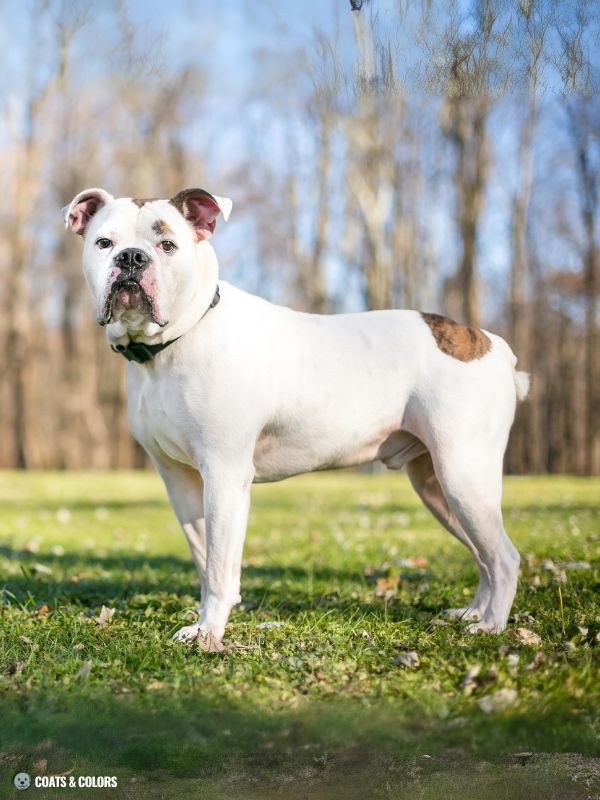
And with the help of some unknown modifiers, these white markings can get so large that they cover the whole dog. This is what happens in dogs with a white coat that truly lacks pigment.
Breeds and varieties with a fully white coat from a lack of pigment include white Bullterriers, Frenchies, American Bulldog, Dogo Argentino as well as Dalmatians, English Setters, or Australian Cattle Dogs (the latter breeds are also born white, just with ticking or roan starting to fill in white areas later).
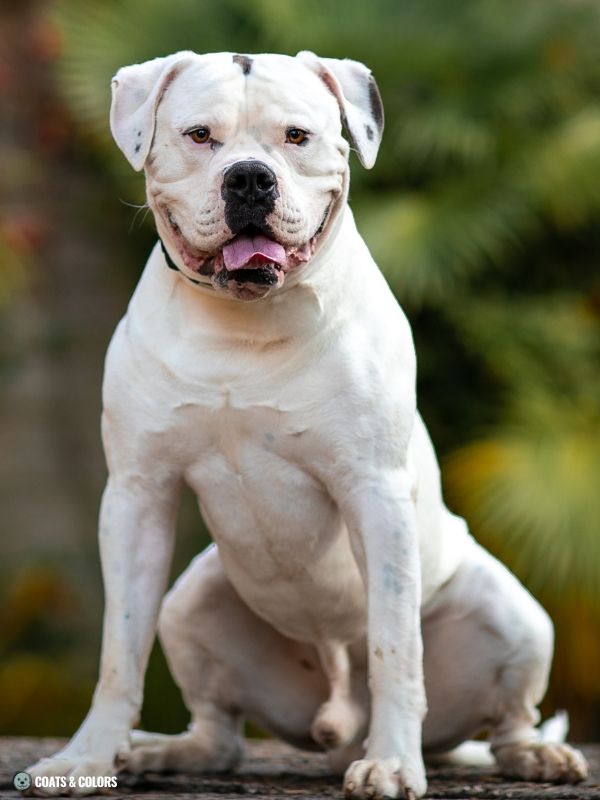


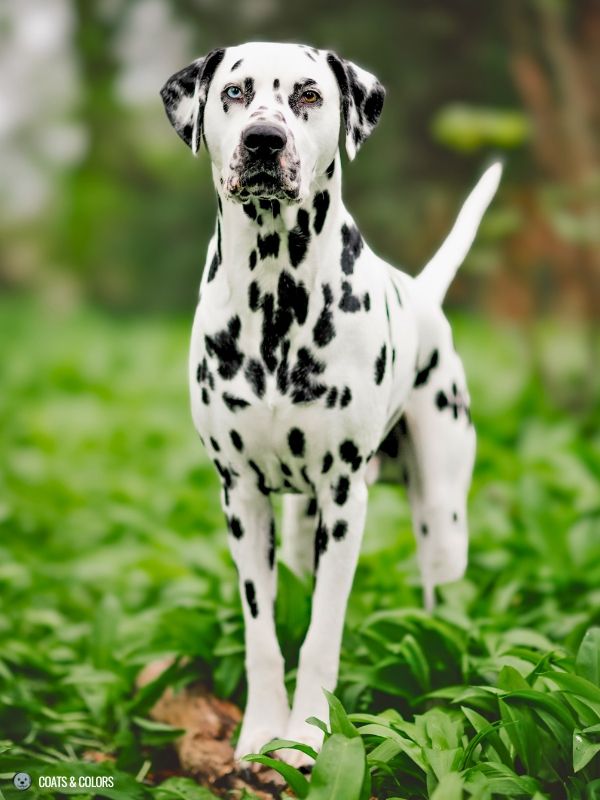


The most common things that can cause a lot of white are piebald spotting and untestable whitehead spotting.
Piebald removes pigment starting from the lower part of the dog’s body.
Whitehead, on the other hand, begins to remove pigment on a dog’s front and face first.
The amount of white from piebald or whitehead seems to be controlled by unknown modifiers.


Dogs can express both traits, piebald, and whitehead, at the same time which can add up. Many high-white breeds express both traits, e.g. Russell-type terriers, English Bulldogs, or American Bulldogs.

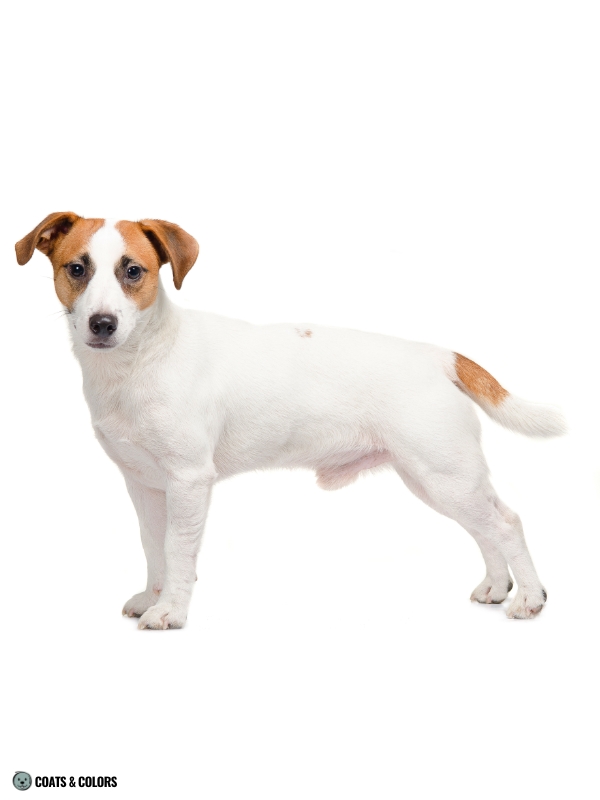
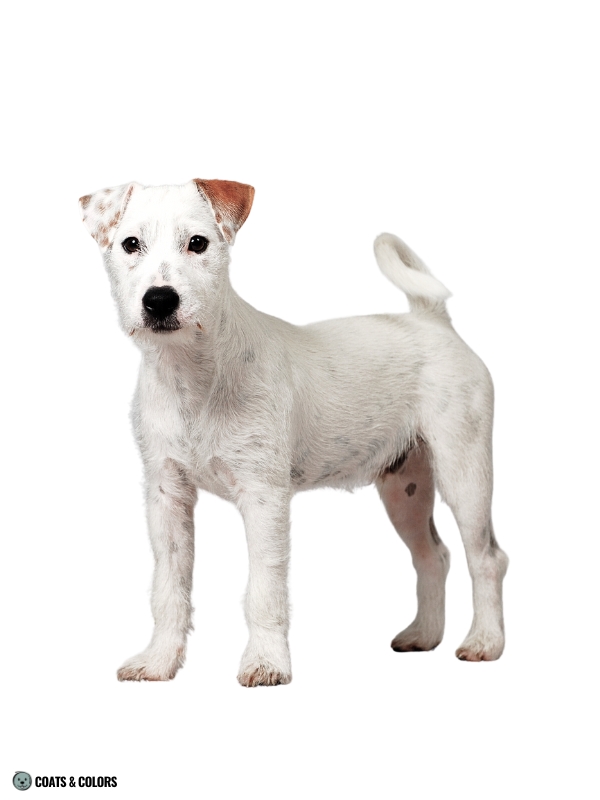
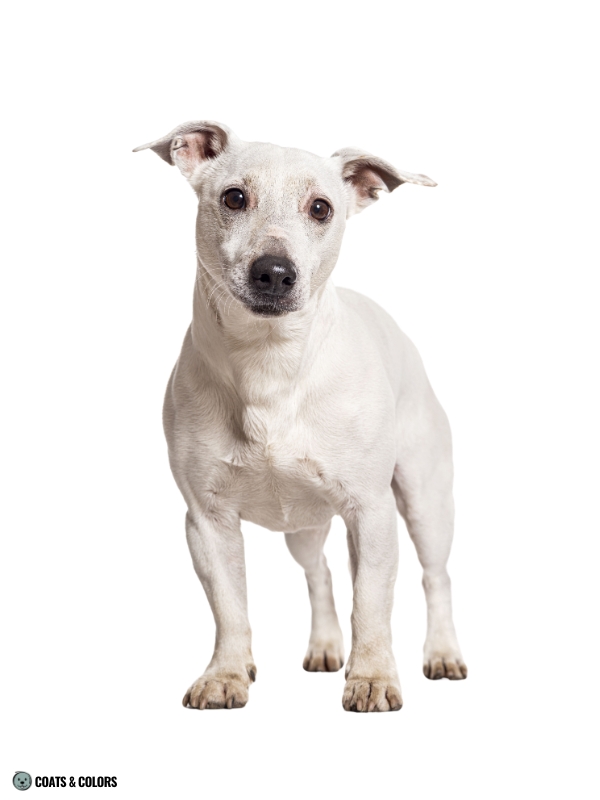
Unfortunately, whatever disturbs the journey of pigment cells into the coat can also affect the ears and eyes. This is why these breeds are at a slightly greater risk for deafness.
Dogs with white faces also often have blue eyes or pink spots in their nose pigment or eye rims.

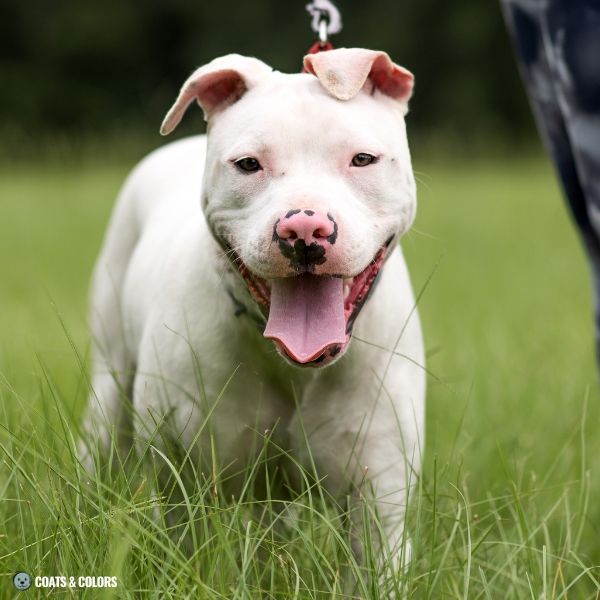
Low Intensity vs. Spotting
How to know if a dog has white pigment or no pigment?
Well, it is not always possible without genetic testing.
But there are some telltale signs that give away which of the two white-causing things a dog might have:
Dogs with a recessive red pattern (e/e) and pale white phaeomelanin tend to still have some light traces of color, usually some buff or cream color around their ears and back.
Ear shading can be very pronounced or very faint.
Dogs with this pattern commonly have white whiskers.
Another thing that happens very often in these dogs, is nose pigment fading.

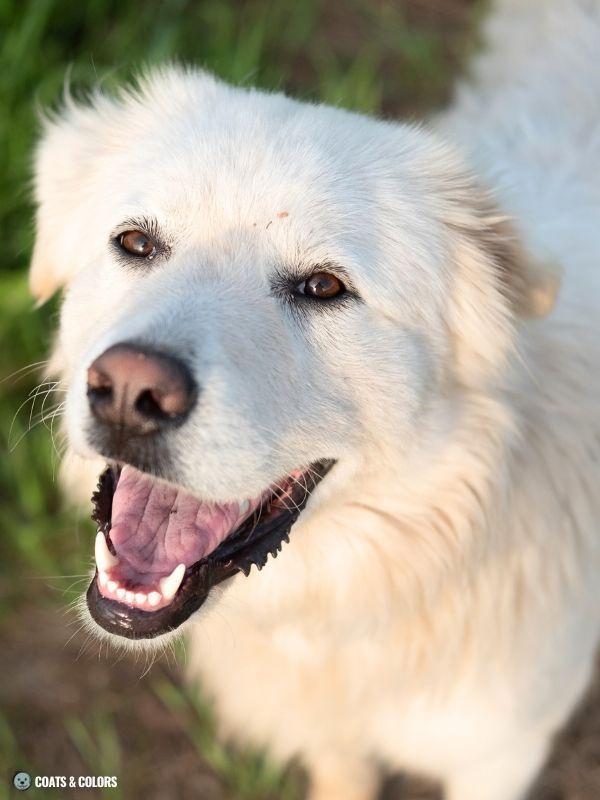
Only real white spotting comes with clearly defined patches of color against the white background, or ticking or roan. If a dog has even minor mottling on his ears or some freckles on his muzzle, you know he has to have a truly white coat (in this area of his body, at least).
Just keep in mind that you can often see skin spots in these dogs. This is not the same as ticking.
Other signs of real white spotting are one or two blue eyes (which can also be caused by other traits) and a full or partial lack of pigment on the nose, lips or eye rims.
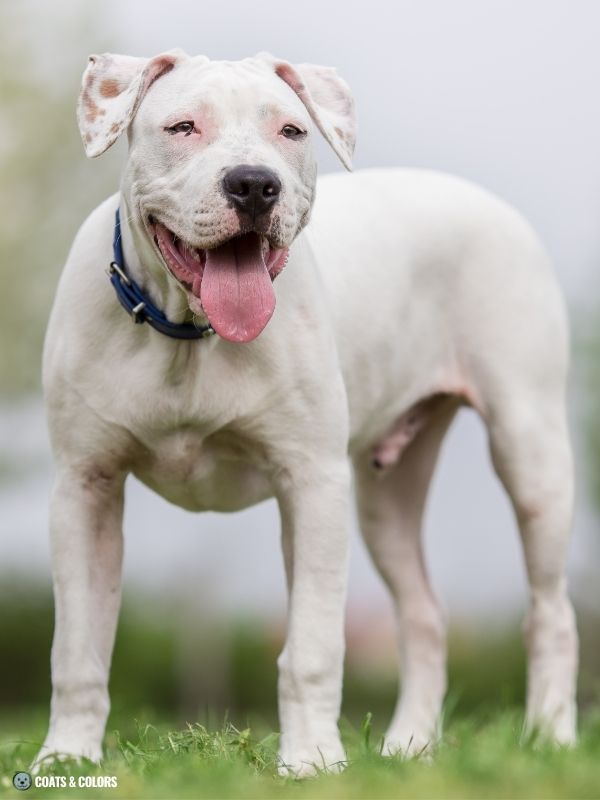
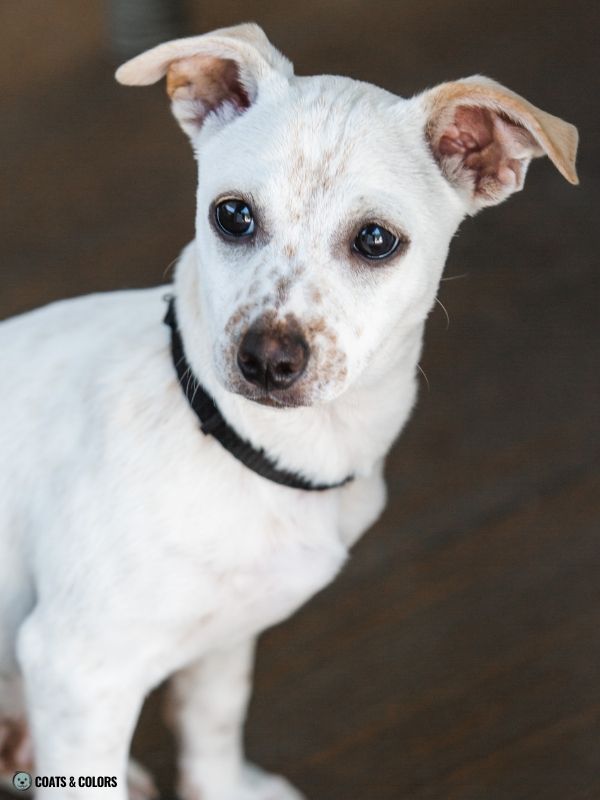
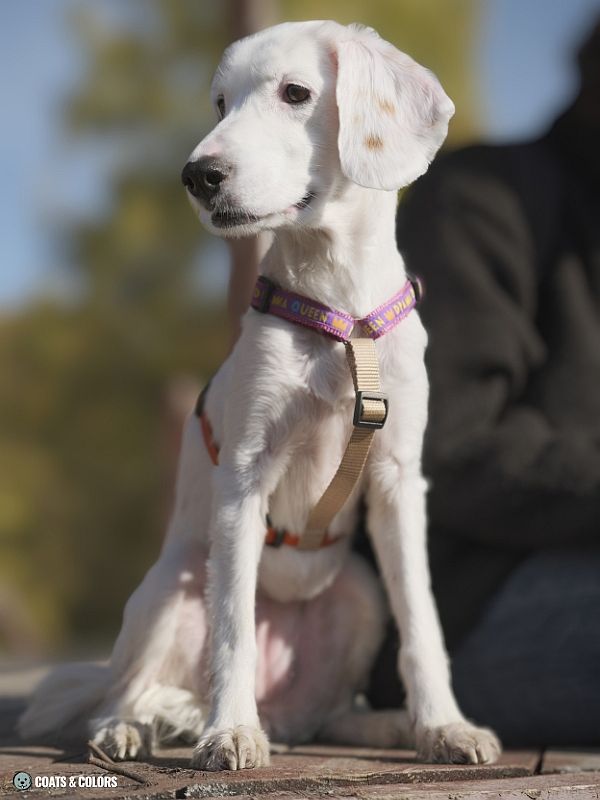
To make matters a little more complicated, many white dog breeds come with both traits (white pigment and white markings) at the same time. You can’t really see or select against white spotting if the dog is already white from having white pigment…
In fact, the majority of American Eskimo Dogs, Bichon Frise, Bolognese, Maltese, Maremma Sheepdogs, Coton de Tulear, Samoyeds, or Great Pyrenees test positive for piebald spotting.
If their pigment is not super pale, you can sometimes see a faint spotting pattern!
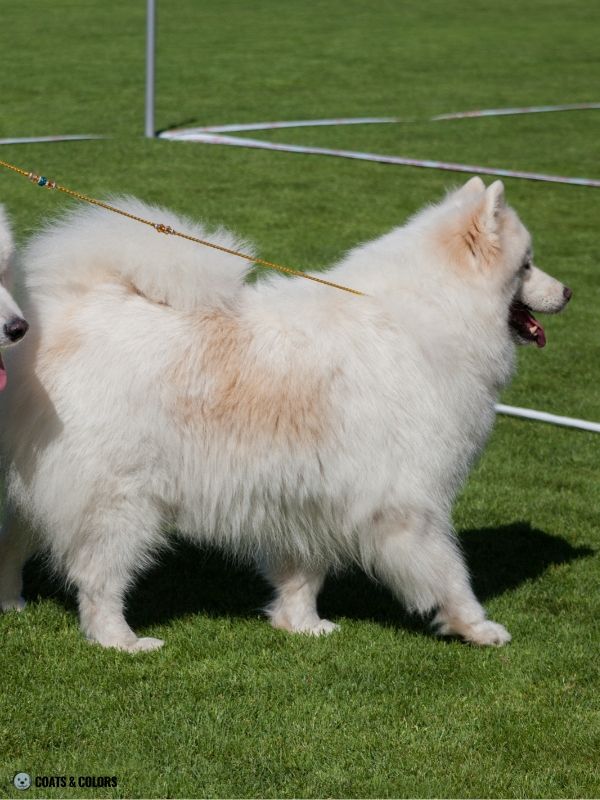
Last but not least:
There is one thing that both traits have in common…
They can both hide any pattern a dog would otherwise have expressed!
If a dog can either only produce phaeomelanin (white, yellow, or red, doesn’t matter) or can not produce any type of pigment at all, most of his pattern will be invisible from the outside.
A white dog always has a hidden or masked pattern underneath his white coat.
Did you know that most Dogo Argentinos are brindle sable with a black mask hidden by their white spotting? That Samoyeds would mostly be black & white patterned? Or that most Maltese would have a black & tan pattern if only they could make black pigment?[1]
Other Traits
To other things come to mind that can cause white coat in dogs:
- Domino restricts eumelanin production. And it can lighten phaeomelanin. If you combine it with a sable pattern (ky/ky Ay/ eG/-) , it can remove black hair tips and cause a very off-white coat. If you spot a very pale sighthound, it might be sable domino (though piebald and recessive red are also common).
- Double merle describes a phenotype where a combination of two stronger merle alleles (e.g. Mh/M or M/M) is able to delete pigment to white instead of just merling it. In severe cases, this can cause a mostly white coat (although dogs with high white double merle often have white spotting too).
- Albinism is a rare genetic condition that affects the production of melanin. Dogs with albinism often have white to very pale creamish coats but they also lack nose, skin, and eye pigment which sets them apart from dogs with just a white coat.
Learn More
Links
[1] Dreger et al. (2019). True Colors: Commercially-acquired morphological genotypes reveal hidden allele variation among dog breeds, informing both trait ancestry and breed potential. PLoS ONE 14(10): e0223995. https://doi.org/10.1371/journal.pone.0223995
[2] AKC Breed Standards.
[3] FCI Breed Standards.

Hi! I’m Steffi. I am a biologist and a big time dog nerd. You are curious about coat color genetics? You’ve come to the right place! Read more.

